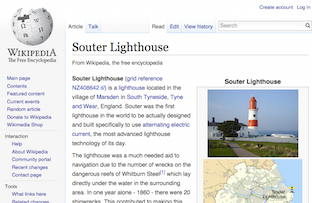Facts about Souter Lighthouse

-
Description
Located in village Marsden, south Tyneside First lighthouse in the world to be designed and built specifically to use alternating electric current, the most advance lighthouse technology of its day Opened in 1871 Height is 23.5 meters (77.1 feet) Built in 1871 Designed by Sir James Douglas Built on Lizard Point but goes by the name “Souter lighthouse” Main light visible for 26 nautical miles Original idea was to build a lighthouse on Souter point (further south) but Lizard Point was chosen as the cliffs are higher so the light was greater. Light turned off in 1988 but remained under control of Trinity House until 1990 Now preserved by the National Trust, opened to public and fog signal is occasionally sounded There is a little bit of green at the bottom of the lighthouse Because a light exists at Lizard Point in Cornwall, it was felt that the best way to avoid confusion was to name the lighthouse after the original site of construction. Sometimes the lighthouse is also referred to as Marsden lighthouse, after the once nearby village, which was demolished in the 1960’s due to the erosion of the cliffs. The light was originally, provided by a carbon arc lamp, which had a power equal to 800,000 candles. The station consist of a red and white painted light tower, a large group of keepers houses(which now serve as a tearoom, museum and holiday lets), the engine room and a diaphone fog signal, all of which are open to the public. -
Owner
wikipedia -
Source
Local (Co-Curate) -
License
What does this mean? Unknown license check permission to reuse
-
Further information
Link: http://en.wikipedia.org/wiki/Souter_Lighthouse
Resource type: Text/Website
Added by: Max Mellor
Last modified: 10 years, 9 months ago
Viewed: 2127 times
Picture Taken: Unknown -
Co-Curate tags












